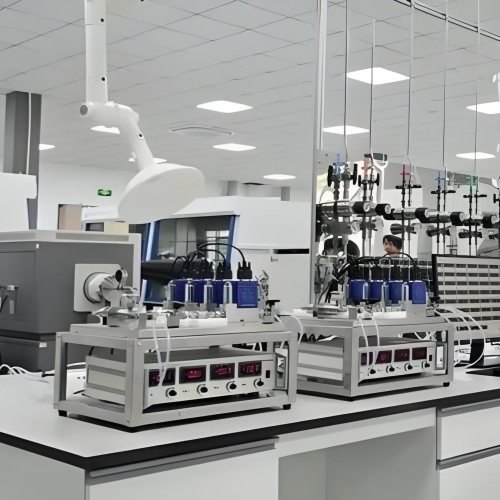Introduction
In recent decades, advanced ceramic materials have emerged as indispensable tools in scientific innovation. With their exceptional properties—such as high-temperature resistance, electrical insulation, chemical stability, and superior mechanical strength—ceramics provide research laboratories with solutions that metals and polymers cannot easily match. Around the world, top universities rely on advanced ceramics to conduct cutting-edge experiments in materials science, physics, chemistry, electronics, and biomedical engineering. This article explores the diverse applications of ceramics in university laboratories, their unique demands, and how suppliers like GESmaterials can support global research institutions.
Advanced Ceramics: Key Properties for Research
The distinct advantages of ceramics stem from their intrinsic physical and chemical characteristics.
- High Temperature Resistance: Many ceramics can withstand temperatures exceeding 1500 °C without losing structural integrity.
- Electrical Insulation & Thermal Conductivity: Materials such as alumina (Al₂O₃) and aluminum nitride (AlN) combine excellent electrical insulation with efficient heat dissipation, making them vital in electronic and energy-related experiments.
- Chemical Inertness: Their ability to resist corrosion and reaction with aggressive chemicals allows researchers to conduct experiments without contamination.
- Mechanical Strength & Wear Resistance: Advanced ceramics provide exceptional hardness and durability, enabling precision components that maintain accuracy under stress.
| Material | Melting Point (°C) | Thermal Conductivity (W/m·K) | Dielectric Constant (1 MHz) | Density (g/cm³) | Key Features |
| Alumina (Al₂O₃) | ~2050 | 20 – 30 | 9 – 10 | 3.8 – 3.9 | High strength, cost-effective, widely used |
| Aluminum Nitride (AlN) | ~2200 | 140 – 180 | 8 – 9 | 3.2 – 3.3 | Excellent thermal conductor, ideal for electronics |
| Silicon Nitride (Si₃N₄) | ~1900 | 20 – 30 | 7 – 8 | 3.1 – 3.3 | High fracture toughness, thermal shock resistance |
| Boron Nitride (BN, hexagonal) | Sublimes ~2973 | 30 – 60 | ~4 | 2.1 – 2.3 | High-temperature stability, solid lubricant |
Applications in Different University Laboratories
1. Materials Science Laboratories
Advanced ceramics are essential for high-temperature sintering experiments, thin-film deposition, and crystal growth. Alumina crucibles, boron nitride containers, and custom sputtering targets are widely used to study new alloys, coatings, and composite materials. Their stability ensures that research results remain uncontaminated and reproducible.
2. Physics Laboratories
Ceramic substrates and insulating components play a crucial role in experiments involving superconductors, semiconductors, and vacuum systems. High-purity ceramics provide the insulation and low-loss properties required for precise measurements in condensed matter and quantum physics research.
3. Chemistry and Energy Research
Chemical laboratories value ceramics for their corrosion resistance and inertness. Silicon nitride and alumina crucibles are employed in catalytic studies and hydrogen storage experiments, while aluminum nitride substrates are used in next-generation battery and fuel cell development.
4. Electronics and Photonics Research
In photonics and semiconductor laboratories, AlN and sapphire substrates serve as platforms for laser diodes, LEDs, and high-frequency devices. Advanced ceramics also act as heat spreaders, improving the efficiency and stability of electronic components.
5. Biomedical Research
Universities pioneering in biomedical engineering employ zirconia and hydroxyapatite ceramics to study biocompatible implants and scaffolds for tissue engineering. Their ability to mimic natural bone structure makes them ideal candidates for medical innovation.
Common Needs and Challenges of University Labs
While the applications are diverse, university laboratories often share similar requirements when sourcing ceramics:
- High Purity and Consistency – Reliable materials are critical to avoid experimental contamination.
- Custom Sizes and Precision Machining – Many experiments require components manufactured to exact dimensions.
- Small Batch, Diverse Requirements – Universities often need multiple materials in small quantities rather than large-scale production.
- Fast Delivery and Global Shipping – Research timelines demand quick access to specialized materials.
Future Trends
The role of ceramics in academia is expanding alongside global technological advancements:
- Quantum Computing: Low-loss dielectric ceramics will be key in developing stable quantum devices.
- Renewable Energy: As hydrogen and next-generation batteries gain momentum, ceramics such as AlN and Si₃N₄ will see increased demand.
- Biomedical Engineering: Personalized medicine will rely on advanced bioceramics for implants and drug delivery systems.
Why Choose GESmaterials for Research Needs
At GESmaterials, we understand the unique requirements of research laboratories:
- Proven experience in supplying ceramics to academic institutions worldwide
- Ability to deliver customized and small-batch solutions for experimental setups
- Competitive pricing aligned with university research budgets
- Global shipping with responsive service for urgent research needs
Whether your lab requires alumina crucibles, boron nitride components, ceramic substrates, or custom sputtering targets, our team can provide reliable solutions that accelerate your research.

